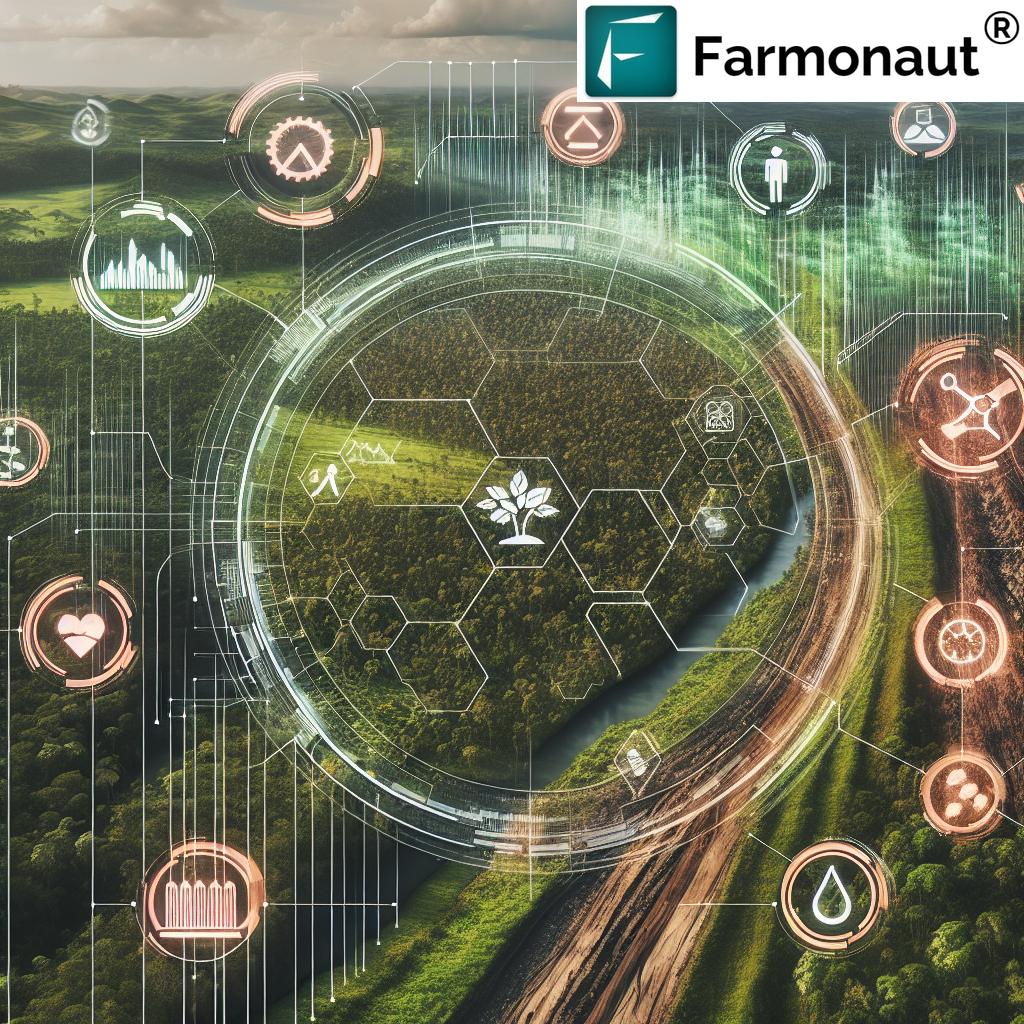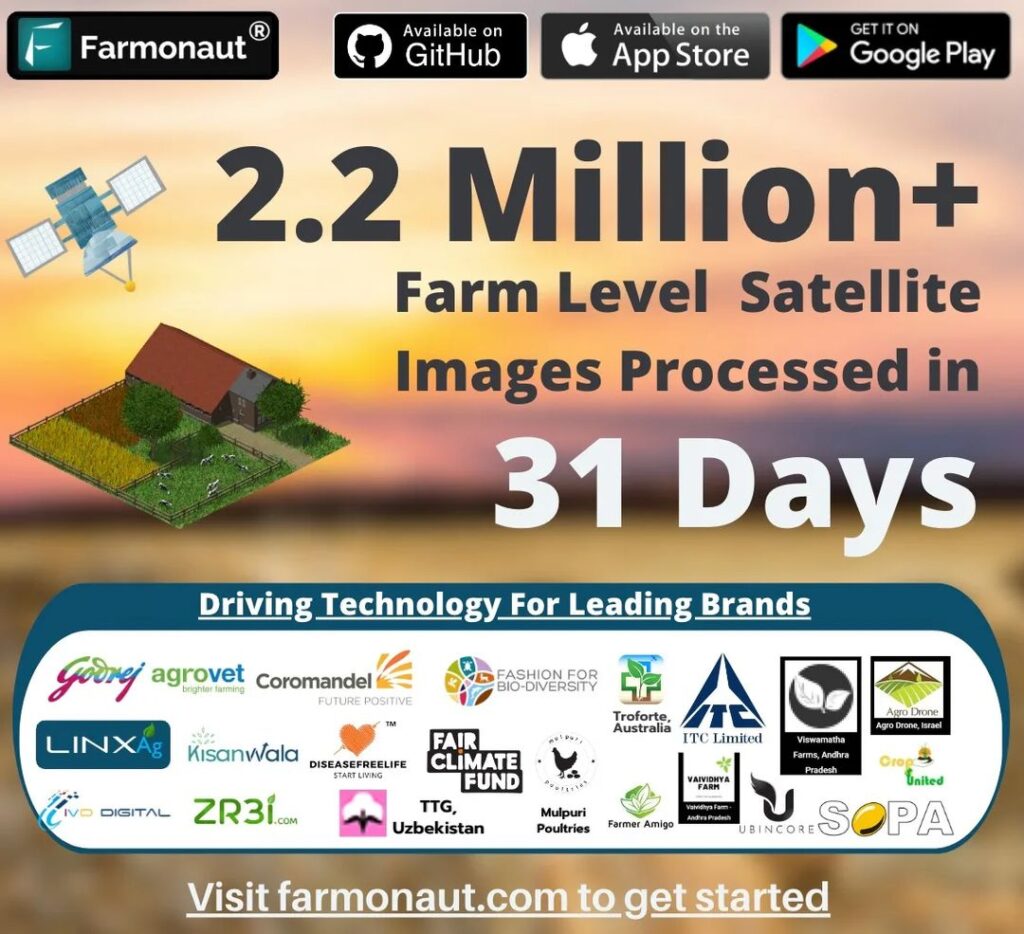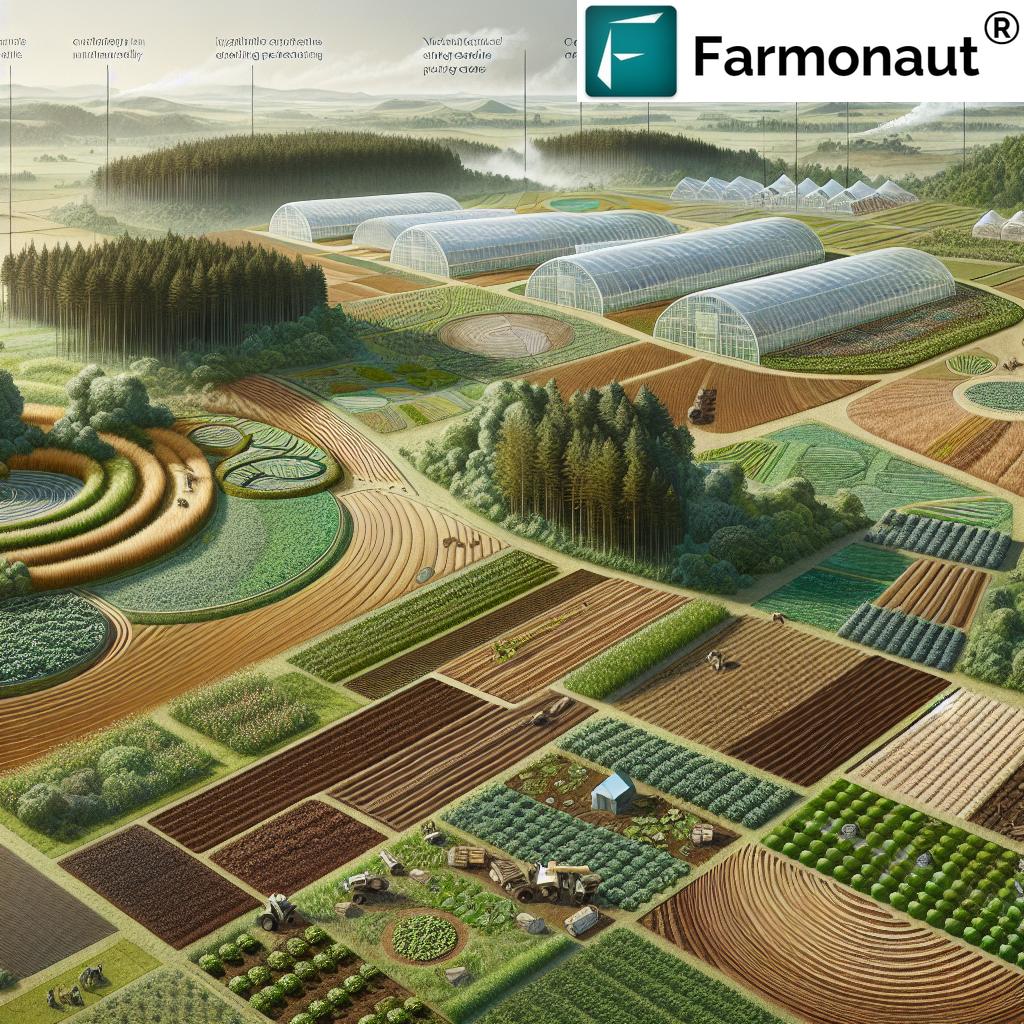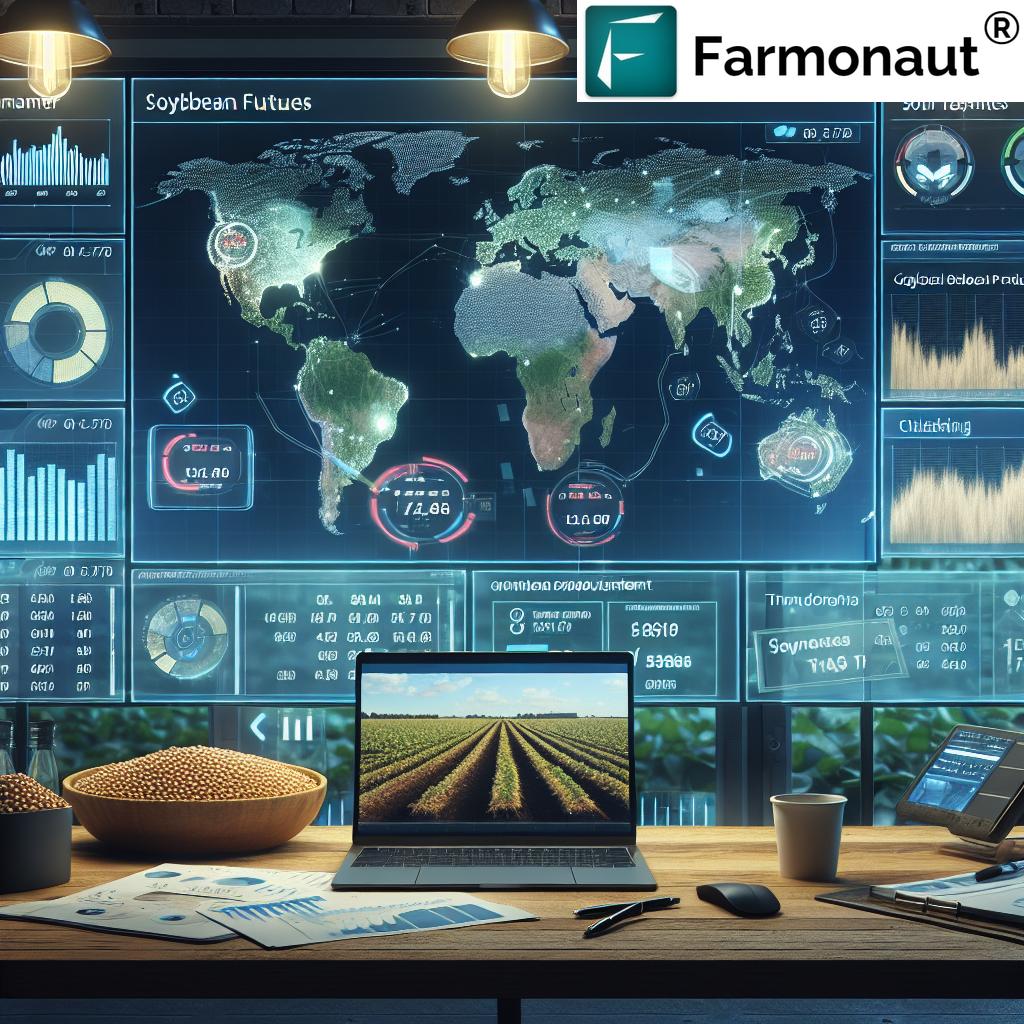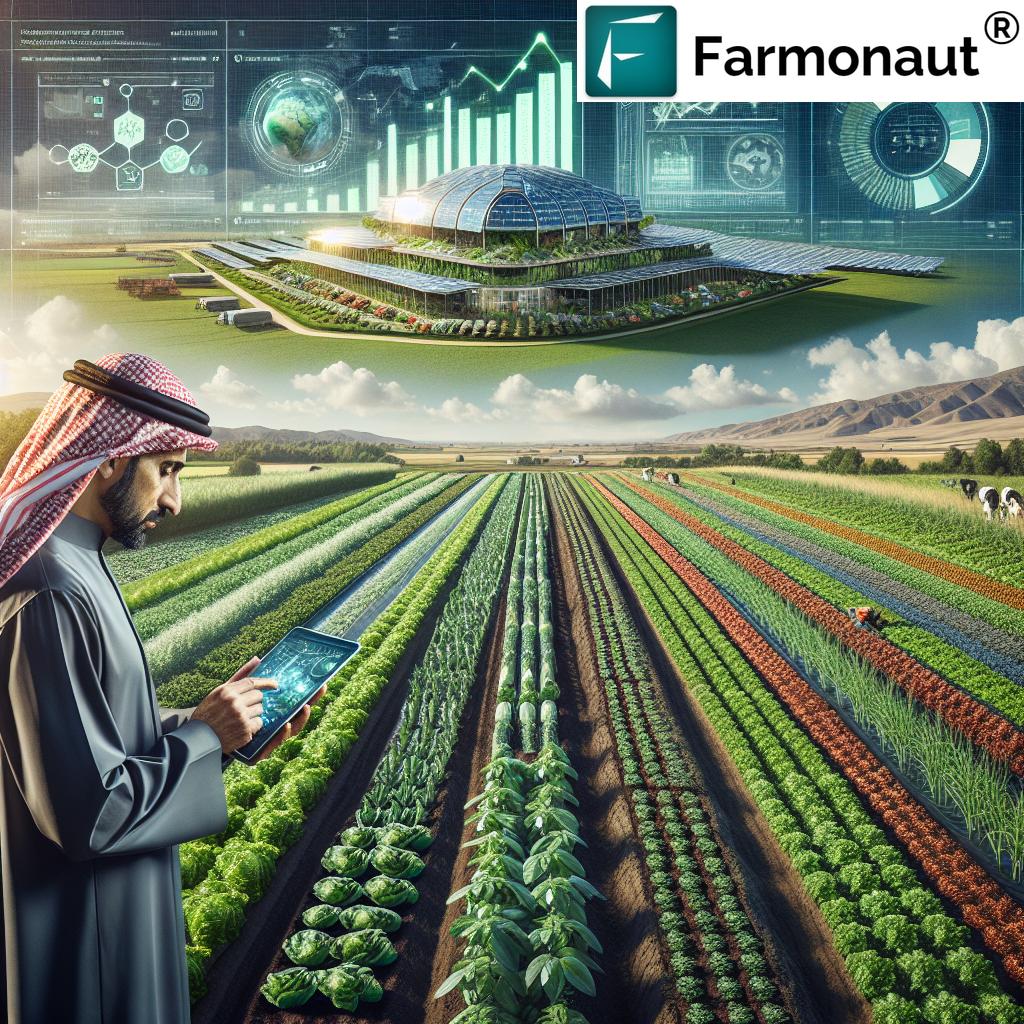Customizable Platform for Forest Care: 7 Top Solutions
“7 leading forest management platforms offer customizable tools, enabling data-driven decisions for over 30 million hectares globally.”
Table of Contents
- Introduction: The Role of Customizable Platforms in Forest Management
- Understanding Forest Management Needs in the Modern Era
- Key Benefits of Customizable Forest Management Platforms
- Comparison: 7 Top Customizable Forest Management Platforms
- The 7 Top Solutions for Customizable Platform for Forest Care
- Farmonaut: Precision Platform for Sustainable Forest Care
- Real-World Features: How Customization Drives Precision Forestry
- Main Challenges in Adopting Customizable Forest Management Tools
- Future Trends and Outlook for Sustainable Forestry Management
- Frequently Asked Questions (FAQ)
“Precision forestry platforms can increase sustainable yield estimates by up to 20% through advanced planning and monitoring features.”
Introduction: The Role of Customizable Platforms in Forest Management
In the era of intensifying climate change, biodiversity loss, and ongoing deforestation, the way we manage our forests requires a strategic and innovative mindset. Customizable forest management platforms are transforming how we, as forest managers, conservationists, and environmental stewards, approach planning, monitoring, and implementing sustainable forestry practices. By integrating advanced technologies, such as satellite imagery, AI-based decision support tools, and collaborative resource management modules, these platforms provide us with robust capabilities to tailor solutions to meet diverse ecosystem and operational needs.
Our forests are dynamic, multifaceted ecosystems. Coordinating their care in the face of escalating threats demands more than traditional methods. We need data-driven forest monitoring solutions, precision in resource allocation, and tools enabling environmental compliance in forestry. Let’s explore how today’s customizable forest management platforms are answering this challenge — and what the seven leading solutions offer to empower our collective forest stewardship.
Understanding Forest Management Needs in the Modern Era
Why are customizable platforms reshaping forest care? The answer lies partly in the complexity of modern forestry. Today’s forest managers face a mosaic of environmental regulations, community expectations, and shifting climate variables. Precision forest planning involves much more than maintaining timber yields or basic conservation. Our needs now span:
- Real-time forest health monitoring: Early detection of pest outbreaks, disease, or illegal activities is vital.
- Data-driven decision support systems that adapt to local, regional, and ecological contexts.
- Stakeholder collaboration: Bringing together government agencies, NGOs, local communities, and private landowners for coherent action.
- Compliance and reporting: Meeting sustainability and regulatory requirements efficiently and transparently.
- Scenario modeling and resource allocation: Planning for multiple outcomes and optimizing the use of land and resources.
- Biodiversity and restoration efforts: Tracking progress for forest restoration and conservation with precision.
Only adaptable forest management platforms — with customizable modules and integrations — can hope to cover the diversity of these evolving needs.
Key Benefits of Customizable Forest Management Platforms
As we deploy modern forest monitoring solutions, several core benefits emerge:
- Enhanced decision-making through real-time integration of satellite imagery, sensor data, and AI-driven analysis.
- Increased efficiency and reduced costs by automating monitoring, reporting, and routine management tasks.
- Scalability and flexibility to adapt to multiple forest types, sizes, and governance structures.
- Greater transparency and compliance through automatic reports, audit trails, and certification support.
- Collaboration and stakeholder coordination via shared dashboards and communication modules for collaborative forest management.
- Tailored modules — from resource allocation tools to species-level tree mapping — for context-specific needs.
By combining these advantages, customizable platforms empower us to meet both operational and environmental goals with precision.
Comparison: 7 Top Customizable Forest Management Platforms
| Platform Name | Customization Features | Remote Sensing Capabilities | Monitoring Frequency (Est.) | Sustainability Modules | User Accessibility | Integration with Existing Systems | Estimated Cost Range |
|---|---|---|---|---|---|---|---|
| Forest Innovation Platform (FIP) | Open-source tools tailored to climate-informed forestry and community needs | Yes (via integrated data) | Periodic / User-customizable | Climate adaptation, restoration planning | Browser/Desktop | High (open APIs, community add-ons) | Free / Open Source |
| WePlan-Forests | Objectives, scenario modeling, spatial targeting | Yes (spatial overlays, environmental data) | User-defined | Biodiversity, carbon sequestration | Browser/Desktop | High | Free (NGO supported) |
| Map My Crop Forest Monitoring | Custom alerts, tree species mapping | Multi-satellite, AI-powered | Weekly – Biweekly (depends on user) | Reforestation, biomass estimation | Web/Desktop & API | Robust integration options | $$ (mid-tier; by quote) |
| Remsoft Operations | Process workflows, scheduling, real-time dashboards | Limited (third-party data feeds) | Real-time for operations, periodic imagery | Sustainable harvesting, logistics | Web/Desktop, Mobile | Integration with ERP, CRM systems | $$$ (premium, scalable) |
| Land Scout Forest Management | Tree plotters, stand planning, field app tools | Via mobile field data; remote imagery optional | As needed (user-driven) | Habitat health, regeneration planning | Mobile, Web/Desktop | APIs for data import/export | $ – $$ (subscription) |
| Iotellect Sustainable Forestry | IoT device integration, low-code dashboards | Sensors + Satellite fusion | Continuous (real-time) | Growth analytics, health monitoring | Web/Desktop, Mobile | Connects with IoT/IIoT systems | $$$ (enterprise) |
| Trimble CFForest | ERP suite; user-defined modules | Spatial GIS, drone support | Real-time / on-demand | Silviculture, harvest tracking | Web/Desktop, SaaS | Enterprise system integration | $$$ (by quote) |
The 7 Top Solutions for Customizable Platform for Forest Care
We turn now to the cornerstone platforms that have shaped precision forest management and monitoring. Each of these forest monitoring solutions equips us with advanced, adaptable tools for meeting our ecological and operational objectives.
1. Forest Innovation Platform (FIP): Climate-Informed Forestry for Communities
FIP is a free, open-source decision support system enabling land managers to rapidly adapt forest planning to climate change. With custom modules for data integration, scenario modeling, and risk analysis, FIP empowers us to design forest management plans tailored to community and ecological needs. Integrated resources guide communities in restoration and carbon sequestration.
- Key Features: Climate adaptation tools, flexible data input, crowd-sourced improvements.
- Use Case: Ideal for regional governments and NGOs focused on climate resilience.
- Learn more: forestinnovationplatform.org
2. WePlan-Forests: Scenario-Driven Restoration and Biodiversity Planning
WePlan-Forests brings an intuitive, multi-objective optimization platform for ecosystem restoration. By integrating spatial, climate, and biodiversity variables, it evaluates alternative scenarios and reports projected climate mitigation and biodiversity improvements. Customizable targets allow for regionally adapted plans, making the platform suitable for all sizes of restoration projects.
- Key Features: Multi-scenario planning, biodiversity and carbon analysis, interactive maps.
- Use Case: Groups pursuing long-term restoration or large-scale conservation.
- Learn more: weplan-forests.org
3. Map My Crop – Forest Monitoring Platform: Automated Satellite-Based Tracking
Map My Crop leverages satellite imagery, artificial intelligence, and field sensor data to automate forest health monitoring. Custom modules help us detect deforestation events, track reforestation plans, classify tree species, and estimate biomass. The platform delivers real-time change detection and customizable reports to support stakeholder coordination and compliance.
- Key Features: Automated deforestation detection, reforestation progress, tree species mapping.
- Use Case: For organizations and conservationists who need scalable, hands-off monitoring.
- Learn more: mapmycrop.com
4. Remsoft Operations: Data-Driven Collaborative Forest Management
Remsoft offers a central hub for integrated forest operations — from resource allocation to transportation planning. Its scalable architecture integrates operational, spatial, and logistical data for collaborative, real-time decision-making. User customization includes advanced scheduling and optimization tools, enhancing coordination between field crews, headquarters, and stakeholders.
- Key Features: Live dashboards, workflow customization, collaborative task management.
- Use Case: Suited for large-scale, multi-stakeholder forestry enterprises.
- Learn more: forestx.se
5. Land Scout Forest Management: Field-Ready Stand Management
Land Scout supports both private forest managers and organizations controlling extensive land tracts. Customizable tree plotters and field apps allow us to efficiently map species, monitor stand density, and track environmental variables, optimizing restoration decisions and reporting.
- Key Features: Mobile-optimized, species/density management, easy reporting.
- Use Case: Any organization requiring ground-verified data input linked to digital mapping.
- Learn more: landscout.com
6. Iotellect Sustainable Forestry Solution: IoT-Powered Real-Time Precision
Iotellect’s AI-powered, low-code platform brings together forest health sensors, weather feeds, and blockchain tracking to support sustainable forestry practices. Real-time dashboards provide actionable insights and customizable alerts for potential threats detected on the ground or through satellites.
- Key Features: Real-time, low-code dashboards; integration with IoT, blockchain-enabled traceability.
- Use Case: Forestry operations seeking to leverage IoT for compliance and in-field asset management.
- Learn more: iotellect.com
7. Trimble CFForest: Enterprise-Scale ERP for Forest Owners
Trimble CFForest blends spatially-enabled ERP, silviculture, harvest tracking, and comprehensive recordkeeping. Its modular approach is suitable for medium to very large forest owners requiring robust user-defined modules, APIs, and real-time spatial analytics.
- Key Features: Land and resource inventory, mobile and desktop accessibility, ERP suite with custom modules.
- Use Case: Enterprise-level management with complex needs for integration and compliance.
- Learn more: forestry.trimble.com
Farmonaut: Precision Platform for Sustainable Forest Care
Among customizable forest management tools, Farmonaut stands out through its transformative fusion of satellite imagery for forest management, AI-based analytics, and accessible multi-platform design. Our mission is clear: to democratize precision forestry and make sustainable practices affordable and accessible for all— from smallholders to global agribusinesses, government agencies, NGOs, and research institutions.
Farmonaut’s Platform provides:
- Real-time forest health monitoring with multispectral satellite imagery—delivering NDVI, soil moisture, and vegetation health insights to detect stress, pest outbreaks, or illegal logging.
- AI-driven advisory (“Jeevn AI”) for forest managers that analyzes climate, soil conditions, and operational data for adaptive management strategies.
- Blockchain-based traceability for supply chain accountability, essential in conservation timber, non-timber forest products, and product tracing.
- Fleet and resource management tools facilitating transparent logistics, vehicle tracking, and cost optimization of forestry equipment.
- Carbon footprinting to quantify and reduce environmental impact, helping organizations align with climate goals and compliance standards.
- API integrations for seamless connection to existing forest management information systems—ideal for research, government, and third-party client portals. Visit Farmonaut API or API Developer Docs.
- Mobile and desktop accessibility so all stakeholders remain connected, from field teams to international support staff.
The modular design and affordable subscription model ensures scalability, bringing precision forest planning within reach of users from community forests to national parks—no expensive hardware required!
Unlock advanced monitoring and advisory for your forest:
- Large-Scale Plantation and Forest Advisory – The ultimate cloud-based dashboard for overseeing vast forest and agroforestry areas.
- Carbon Footprinting – Track, report, and mitigate your forest operation’s carbon impacts for true sustainability.
- Crop Loan and Insurance Verification – Use satellite data for instant, fraud-resistant forest area verification.
- Crop Plantation & Forest Advisory – Invaluable insights tailored to forest restoration, plantation design, and ongoing management.
Learn more on our Farmonaut official site.
Real-World Features: How Customization Drives Precision Forestry
Let’s detail the characteristics shared across top customizable forest management platforms, using Farmonaut and its peers as references.
A. Data Integration and Analysis
- Satellite imagery for forest management delivers high-frequency images for vegetation and soil assessment.
- Multi-source integration: Field sensors, government datasets, and community input ensure robust monitoring and decision support.
- Analytics modules: Machine learning models detect unusual patterns (e.g., sudden canopy loss) and predict areas at risk.
B. Decision Support and Planning Tools
- Optimization engines simulate resource allocation and scenario modeling to maximize ecological and economic returns while preserving biodiversity.
- Scenario tools enable dynamic “what-if” planning, from pest outbreaks to drought adaptation.
C. Forest Health Monitoring and Real-Time Reporting
- Automated alerts for disease, illegal activities, or non-compliance events, ensuring rapid stakeholder response.
- Historical analysis for understanding trends and benchmarking restoration progress.
D. Stakeholder Collaboration & Communication
- Multi-user dashboards: Secure access for NGOs, government agencies, and community managers.
- Mobile and web access: Enables collaboration from the field or remote offices.
- Automated reporting workflows: Simplifies regulatory compliance and environmental reporting.
E. Compliance and Certification
- Automated documentation for rapid evidence of environmental compliance in forestry.
- Traceability with blockchain-backed records (as with Farmonaut) for certified timber and NTFPs.
F. Custom Alerts and Thresholds
- Users can tailor alerts to location-based risks, regulatory triggers, or ecological thresholds.
- Organizations define their own compliance and operational thresholds for adaptive management.
G. Mobile & API-Driven Modularity
- Smartphone apps, APIs, and web dashboards put control in the hands of every stakeholder, no matter their technical skill.
- Easy integration with legacy systems and local databases bridges the digital divide between tech-savvy offices and field crews.
Main Challenges in Adopting Customizable Forest Management Tools
Even the most robust forest management platforms require careful implementation and often face notable challenges:
- Data Quality & Integration: Ensuring satellite and sensor data are accurate, compatible, and up to date is essential for credible analysis.
- User Training & Adoption: Forest teams and communities need hands-on training to fully utilize customizable tools.
- Initial and Ongoing Costs: Some solutions, especially enterprise-scale platforms, require significant upfront investment, though providers like Farmonaut lead in making precision affordable.
- Data Security & Privacy: Sensitive location, asset, and operational data must be protected to prevent misuse and meet regulatory requirements.
- Change Management: Moving from legacy methods to digital-first approaches requires strong leadership and communication within organizations.
Despite these hurdles, the long-term benefits in improved accuracy, reduced resource wastage, and enhanced sustainability far outweigh the challenges.
Future Trends and Outlook for Sustainable Forestry Management
The landscape of forest management platforms is rapidly evolving. We anticipate continued innovation in:
- Artificial Intelligence & ML: Deep learning will further personalize advisory tools and automate anomaly detection from vast datasets.
- Remote Sensing Technology: Higher-resolution satellite imagery and low-orbit networks will supply near-continuous data for even the most remote forests.
- Blockchain Integration: Secure, immutable recordkeeping for traceability, compliance, and ecosystem service credits.
- Carbon Monitoring: API-driven modules and dashboards will become standard for tracking forest contributions to climate change mitigation.
- Mobile-First Workflows: Field data, AI insight, and decision collaboration accessible anywhere, at any time.
- Increased Community Participation: Open-source, user-led innovation will ensure platforms adapt to the realities of on-the-ground restoration and conservation.
By adopting these tools now, we collectively build resilience against environmental challenges — and help secure the sustainability of our forests for generations.
Frequently Asked Questions (FAQ)
What makes a forest management platform “customizable”?
A customizable platform allows users to adapt modules, data integrations, analytics, and reporting to fit unique forestry, land use, or operational contexts. This often includes user-defined thresholds, scenario planning, custom alerts, and seamless integration with existing systems.
How does satellite imagery support forest health monitoring?
Satellite imagery provides frequent, non-invasive snapshots of forest canopy, health, soil moisture, and other key variables. AI analysis detects patterns and anomalies—enabling proactive responses to deforestation, disease, or illegal activities.
Why is stakeholder collaboration critical in sustainable forestry?
Effective forest management often involves government agencies, NGOs, local communities, and private landowners. Collaboration platforms facilitate transparent decision-making, rapid coordination in emergencies, and inclusive long-term conservation efforts.
What is environmental compliance in forestry, and how do platforms help?
Environmental compliance refers to meeting national, regional, or international regulations regarding forestry operations—protecting biodiversity, carbon stocks, and ecosystem health. Customizable platforms streamline compliance with automated monitoring, reporting, and audit-ready documentation.
Who benefits most from using a customizable forest management tool?
Benefits are broad: individual landowners, large forest enterprises, community-managed forests, governments, researchers, and NGOs all leverage these solutions for improved monitoring, transparency, and impact.
How is Farmonaut different from traditional forestry tools?
Traditional tools often require expensive, site-specific equipment and manual data entry. Farmonaut provides cost-effective, scalable access to real-time satellite data, automated AI advisory, and intuitive apps—making precision forestry accessible to every user.
Farmonaut Subscription Plans
Conclusion: Harnessing Customizable Platforms for Forest Care & Sustainable Futures
As we have explored, modern forest management platforms offer a game-changing opportunity to revitalize the way we monitor, plan, and protect our global forests. Whether utilized for real-time monitoring, integrated restoration planning, compliance reporting, or strategic decision-making, these solutions ensure that sustainable forestry is not just an ambition but a practical, measurable reality.
With platforms like Farmonaut, we democratize access to advanced tools, making precision forestry a reality for users worldwide — from indigenous communities reviving native landscapes to government-led conservation efforts and large commercial operations. As technology continues to evolve, we must seize this momentum, enabling data-driven, collaborative, and truly sustainable forest management for current and future generations.



